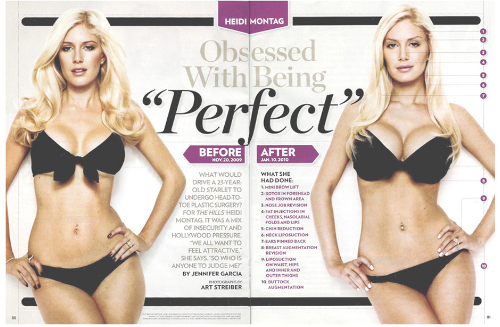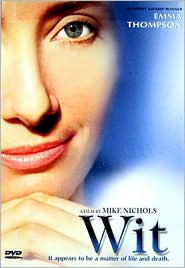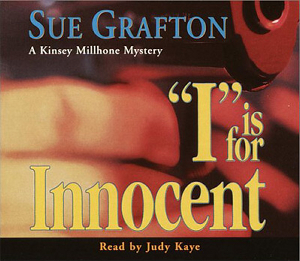Laurie Essig’s new book, American Plastic: Boob Jobs, Credit Cards, and the Quest for Perfection, includes a chapter on how we learn to want cosmetic surgery. She quotes Joan Rivers, from her book Men Are Stupid . . . And They Like Big Boobs: A Woman’s Guide to Beauty Through Plastic Surgery
:
My abiding life philosophy is plain: In our appearance-centric society, beauty is a huge factor in everyone’s professional and emotional success—for good or ill, it’s the way things are; accept it or go live under a rock.
Essig comments:
But Rivers is a TV star. TV and movie stars have always utilized the miracles of cosmetic surgery to look good in the two-dimensional spaces they inhabit. How did the rest of us learn to desire a perfectly plastic body? How did ordinary women and men with ordinary lives and ordinary bodies learn that they need plastic? The answer: the plastic ideological complex, a set of cultural texts that are both highly contested and yet tightly on message. It is itself so ubiquitous that it might even be described as hegemonic. In other words, the “need” for cosmetic procedures is impossible to avoid. Through advertising and TV shows, movies and magazines, we learn to want cosmetic intervention in our aging faces and imperfect bodies. This need is now so firmly implanted in our cultural psyche that it has become “common sense” to embrace cosmetic procedures. Why wouldn’t we want to look more beautiful, younger, thinner, more feminine, better? The question is no longer will you have plastic surgery, but when.
Accept plastic beauty or go live under a rock. Rivers isn’t just joking; she’s also doing the serious work of enacting the ideology of plastic, an ideology that we can no longer avoid. Even if we did live under a rock, whenever we crawled out from underneath it, we would be assaulted by images of perfectly plastic beauty on billboards and the sides of buses and on TV and in movies and even the nightly news. And then there are those damn magazine racks, an unavoidable gauntlet of Dos! and Don’ts! that must be passed through each and every time we buy our food.

















